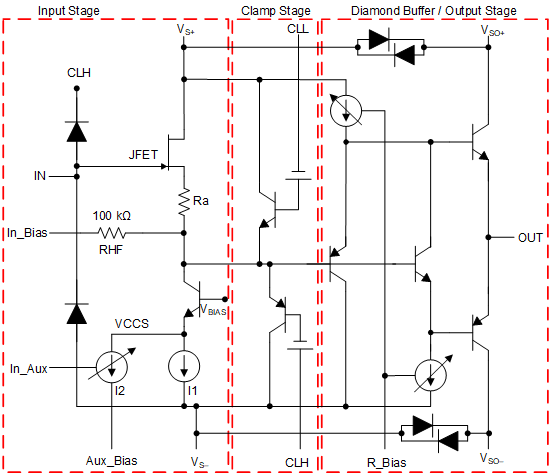SBOS998C June 2021 – March 2022 BUF802
PRODUCTION DATA
- 1 Features
- 2 Applications
- 3 Description
- 4 Revision History
- 5 Pin Configuration and Functions
- 6 Specifications
- 7 Parameter Measurement Information
- 8 Detailed Description
- 9 Application and Implementation
- 10Power Supply Recommendations
- 11Layout
- 12Device and Documentation Support
- 13Mechanical, Packaging, and Orderable Information
Package Options
Mechanical Data (Package|Pins)
- RGT|16
Thermal pad, mechanical data (Package|Pins)
- RGT|16
Orderable Information
8.2 Functional Block Diagram
 Figure 8-1 Functional Block
Diagram
Figure 8-1 Functional Block
DiagramFigure 8-1 shows an overview of the internal structure of the BUF802. The internal schematic of the BUF802 can be divided into the following 3 parts:
- Input Stage, which consists of a low noise JFET and its biasing circuitry. The Input Stage can be configured in two modes, BF Mode and CL Mode. Choosing one of the two modes affects the circuit operation of the Input Stage. The Clamp and Output Stage operation are unaffected by the mode selection. Section 8.4 describes the two modes in greater detail.
- Clamp Stage, which
provides the following functions:
- Protects the input of the BUF802 against large input signal transients through diode clamps to VS- and CLH respectively.
- Ensures the output voltage of the BUF802 does not exceed the voltage at the CLH and CLL.
- Output Stage, which tracks the JFET source voltage and is optimized to drive a 50 Ω and 100 Ω load while maintaining signal fidelity.